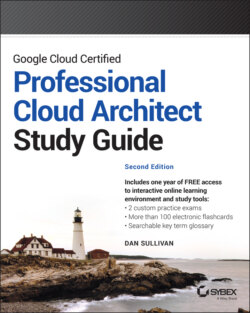Читать книгу Google Cloud Certified Professional Cloud Architect Study Guide - Dan Sullivan - Страница 33
Understanding Storage Requirements
ОглавлениеThere are even more options when it comes to storage. There are several factors to consider when choosing a storage option, including how the data is structured, how it will be accessed and updated, and for how long it will be stored.
Let's look at how you might decide which data storage service to use given a set of requirements. Structured data fits well with both relational and NoSQL databases. If SQL is required, then your choices are Cloud SQL, Spanner, BigQuery, or running a relational database yourself in Compute Engine. If you require a global, strongly consistent transactional data store, then Spanner is the best choice, while Cloud SQL is a good choice for regional-scale databases. If the application using the database requires a flexible schema, then you should consider NoSQL options. Cloud Firestore is a good option when a document store is needed, while Bigtable is well suited for ingesting large volumes of data at low latency.
Of course, you could run a NoSQL database in Compute Engine. If a service needs to ingest time-series data at low latency and one of the business requirements is to maximize the use of managed services, then Bigtable should be used. If there is no requirement to use managed services, you might consider deploying Cassandra to a cluster in Compute Engine. This would be a better choice, for example, if you are planning a lift-and-shift migration to the cloud and are currently running Cassandra in an on-premises data center.
When long-term archival storage is required, then Cloud Storage is the best option. Since Cloud Storage has several classes to choose from, you will have to consider access patterns and reliability requirements when choosing a storage class. If the data is frequently accessed, Standard Storage class storage is appropriate. If high availability of access to the data is a concern or if data will be accessed from different areas of the world, you should consider multiregional or dual-region storage. If data will be infrequently accessed, then Nearline, Coldline, or Archive storage is a good choice. Nearline storage is designed for data that won't be accessed more than once a month and will be stored at least 30 days. Coldline storage is used for data that is stored at least 90 days and accessed no more than once every three months. Archive storage is well suited for data that will be accessed not more than once a year. Nearline, Coldline, and Archive storage have slightly lower availability than Standard Storage.
